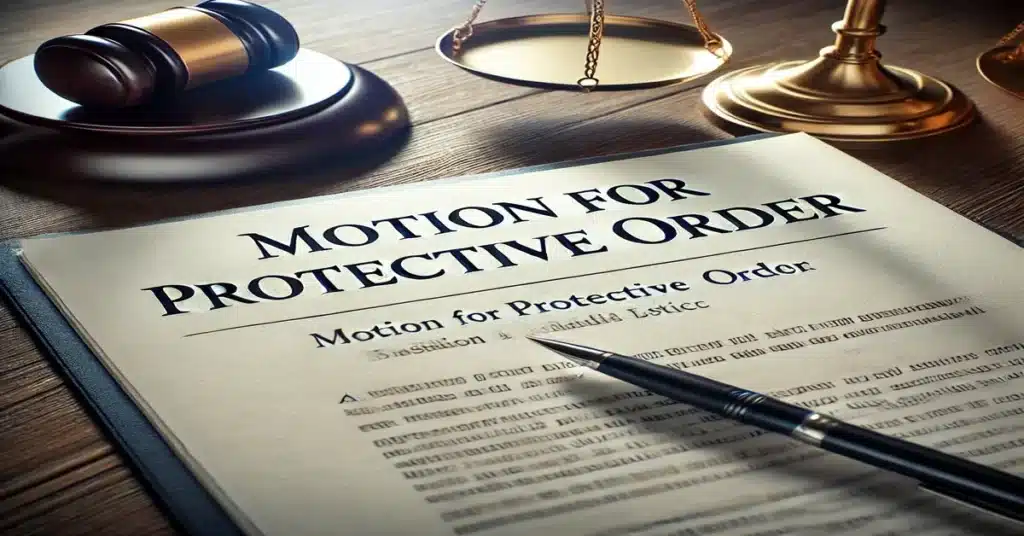During litigation, opposing parties may attempt to obtain information that is irrelevant, overly burdensome, or invasive. A Motion for Protective Order is a legal request to the court to limit or prevent certain discovery requests to protect a party from undue burden, harassment, or disclosure of confidential information.
At Courtroom5, we offer an AI-powered Motion for Protective Order drafting tool designed to assist self-represented litigants in preparing effective motions to safeguard their rights. This tool is available exclusively with a Courtroom5 membership.
➡ Start your Motion for Protective Order journey here.
What Is a Motion for Protective Order?
A Motion for Protective Order is used to restrict certain discovery requests that are unfair or legally improper. Under Rule 26(c) of the Federal Rules of Civil Procedure, a court may grant a protective order if discovery:
- Seeks irrelevant or privileged information
- Is overly broad or unduly burdensome
- Harasses, embarrasses, or oppresses a party
- Requires the disclosure of trade secrets or confidential data
For example, if the opposing party demands access to private financial records that are unrelated to the case, you may file a Motion for Protective Order to prevent disclosure.
Challenges in Filing a Motion for Protective Order
Self-represented litigants often struggle with:
- Understanding Grounds for Protection – Knowing what objections are legally valid.
- Drafting a Persuasive Motion – Clearly explaining to the court why the discovery request is improper.
- Following Procedural Rules – Ensuring correct formatting, supporting documents, and filing deadlines.
A well-prepared motion increases the likelihood of court approval and protects you from unnecessary legal burdens.
How Courtroom5’s AI-Powered Tool Can Assist
Our Motion for Protective Order drafting tool simplifies the process by guiding you through:
- Identifying Legal Grounds for Protection – Ensuring your objections meet court standards.
- Drafting a Strong Motion – Structuring a clear and persuasive legal argument.
- Meeting Court Requirements – Ensuring compliance with court formatting and procedural rules.
This tool is part of a Courtroom5 membership, which provides access to automated legal document drafting, step-by-step litigation guidance, and other essential resources for self-represented litigants.
➡ Start your Motion for Protective Order journey now and safeguard your legal rights.



